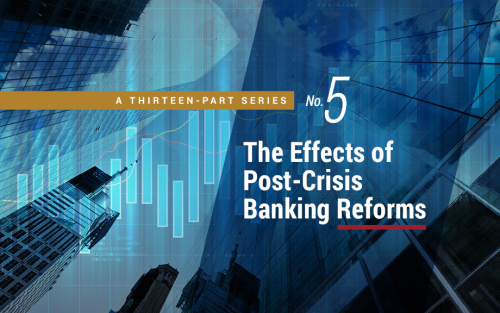Look Out for Outlook‑at‑Risk

The timely characterization of risks to the economic outlook plays an important role in both economic policy and private sector decisions. In a February 2023 Liberty Street Economics post, we introduced the concept of “Outlook-at-Risk”—that is, the downside risk to real activity and two-sided risks to inflation. Today we are launching Outlook-at-Risk as a regularly updated data product, with new readings for the conditional distributions of real GDP growth, the unemployment rate, and inflation to be published each month. In this post, we use the data on conditional distributions to investigate how two-sided risks to inflation and downside risks to real activity have evolved over the current and previous five monetary policy tightening cycles.
Is Higher Financial Stress Lurking around the Corner for China?

Despite China’s tighter financial policies and the Evergrande troubles, Chinese financial stress measures have been remarkably stable around average levels. Chinese financial conditions, though, are affected by global markets, making it likely that low foreign financial stress conditions are blurring the state of Chinese financial markets. In this post, we parse out the domestic component of a Chinese financial stress measure to evaluate the downside risk to future economic activity.
How Does U.S. Monetary Policy Affect Emerging Market Economies?

The question of how U.S. monetary policy affects foreign economies has received renewed interest in recent years. The bulk of the empirical evidence points to sizable effects, especially on emerging market economies (EMEs). A key theme in the literature is that these spillovers operate largely through financial channels—that is, the effects of a U.S. policy tightening manifest themselves abroad via declines in international risky asset prices, tighter financial conditions, and capital outflows. This so-called Global Financial Cycle has been shown to affect EMEs more forcefully than advanced economies. It is because higher U.S. policy rates have a disproportionately larger impact on rates in EMEs. In our recent research, we develop a model with cross-border financial linkages that provides theoretical foundations for these empirical findings. In this Liberty Street Economics post, we use the model to illustrate the spillovers from a tightening of U.S. monetary policy on credit spreads and on the uncovered interest rate parity (UIP) premium in EMEs with dollar-denominated debt.
What Do Financial Conditions Tell Us about Risks to GDP Growth?
Changing Risk‑Return Profiles

Are stock returns predictable? This question is a perennially popular subject of debate. In this post, we highlight some results from our recent working paper, where we investigate the matter. Rather than focusing on a single object like the forecasted mean or median, we look at the entire distribution of stock returns and find that the realized volatility of stock returns, especially financial sector stock returns, has strong predictive content for the future distribution of stock returns. This is a robust feature of the data since all of our results are obtained with real-time analyses using stock return data since the 1920s. Motivated by this result, we then evaluate whether the banking system appears healthier today, and if recent regulatory reforms have helped.
The Macro Effects of the Recent Swing in Financial Conditions
Credit conditions tightened considerably in the second half of 2015 and U.S. growth slowed. We estimate the extent to which tighter credit conditions last year were responsible for the slowdown using the FRBNY DSGE model. We find that growth would have slowed substantially more had the Federal Reserve not delayed liftoff in the federal funds rate.
Should Monetary Policy Respond to Financial Conditions?
Bianca De Paoli There’s an ongoing debate about whether policymakers should respond to financial conditions when setting monetary policy. An argument is often made that financial stability concerns are more appropriately dealt with by using regulatory and macroprudential tools. This post offers a theoretical justification for policymakers to monitor and possibly respond to financial conditions […]
How Unconventional Are Large‑Scale Asset Purchases?
The large-scale asset purchases (LSAPs) undertaken by the Fed starting in late November 2008 are widely considered to be a form of “unconventional” monetary policy.















 RSS Feed
RSS Feed Follow Liberty Street Economics
Follow Liberty Street Economics